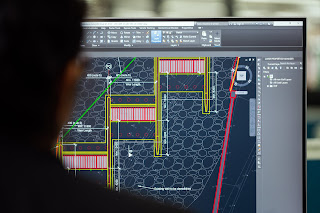**Introduction**
AutoCAD, the industry-standard software for computer-aided design, empowers engineers, architects, and designers to create precise and detailed drawings. To maximize productivity, it's crucial to become adept at using essential commands and their corresponding shortcut keys. In this article, we'll explore a selection of indispensable AutoCAD commands along with their time-saving shortcuts.
**Section 1: Basic Drawing Commands**
*1.1 Line (`LINE`)*
- Shortcut: `L`
- Use this fundamental command to draw straight lines.

*1.2 Circle (`CIRCLE`)*
- Shortcut: `C`
- Create circles with specified radii or diameters.
*1.3 Rectangle (`RECTANG`)*
- Shortcut: `REC`
- Draw rectangles with defined lengths and widths.
**Section 2: Editing and Modification Commands**
*2.1 Copy (`COPY`)*
- Shortcut: `CO`
- Duplicate objects with precision.
*2.2 Move (`MOVE`)*
- Shortcut: `M`
- Relocate objects swiftly and accurately.
*2.3 Array (`ARRAY`)*
- Shortcut: `AR`
- Duplicate objects in rectangular or polar patterns.
**Section 3: Dimensioning Commands**
*3.1 Linear Dimension (`DIMLINEAR`)*
- Shortcut: `DIML`
- Add linear dimensions to your drawings.
*3.2 Radial Dimension (`DIMRADIUS`)*
- Shortcut: `DIMR`
- Specify radii of circles or arcs.
**Section 4: Modify Commands for Accuracy**
*4.1 Trim (`TRIM`)*
- Shortcut: `TR`
- Trim objects to defined boundaries.
*4.2 Extend (`EXTEND`)*
- Shortcut: `EX`
- Extend objects to meet other objects.
**Section 5: Layers and Properties Commands**
*5.1 Layer Properties (`LAYER`)*
- Shortcut: `LA`
- Manage layers for organizing and controlling object properties.
*5.2 Properties (`PROPERTIES`)*
- Shortcut: `PR`
- View and modify properties of selected objects.
**Section 6: Navigation and View Commands**
*6.1 Zoom In/Out (`ZOOM`)*
- Shortcut: `Z`
- Magnify or reduce the view of your drawing.
*6.2 Pan (`PAN`)*
- Shortcut: `P`
- Shift the view within the drawing area.
**Section 7: Text and Annotation Commands**
*7.1 Text (`TEXT`)*
- Shortcut: `TX`
- Add annotations, labels, or notes to your drawing.
*7.2 Multileader (`MLEADER`)*
- Shortcut: `ML`
- Create leaders with multiple lines of text.
**Conclusion**
Mastering these essential AutoCAD commands and their respective shortcut keys is key to increasing your efficiency and productivity. Remember, practice is key. Regular use of these commands will lead to smoother workflows and more polished designs. As you become more comfortable, consider exploring even more advanced commands to further enhance your AutoCAD skills.
**Additional Tip:** It's a good practice to keep a cheat sheet of these commands and shortcuts handy until they become second nature. This will greatly expedite your work in AutoCAD.














